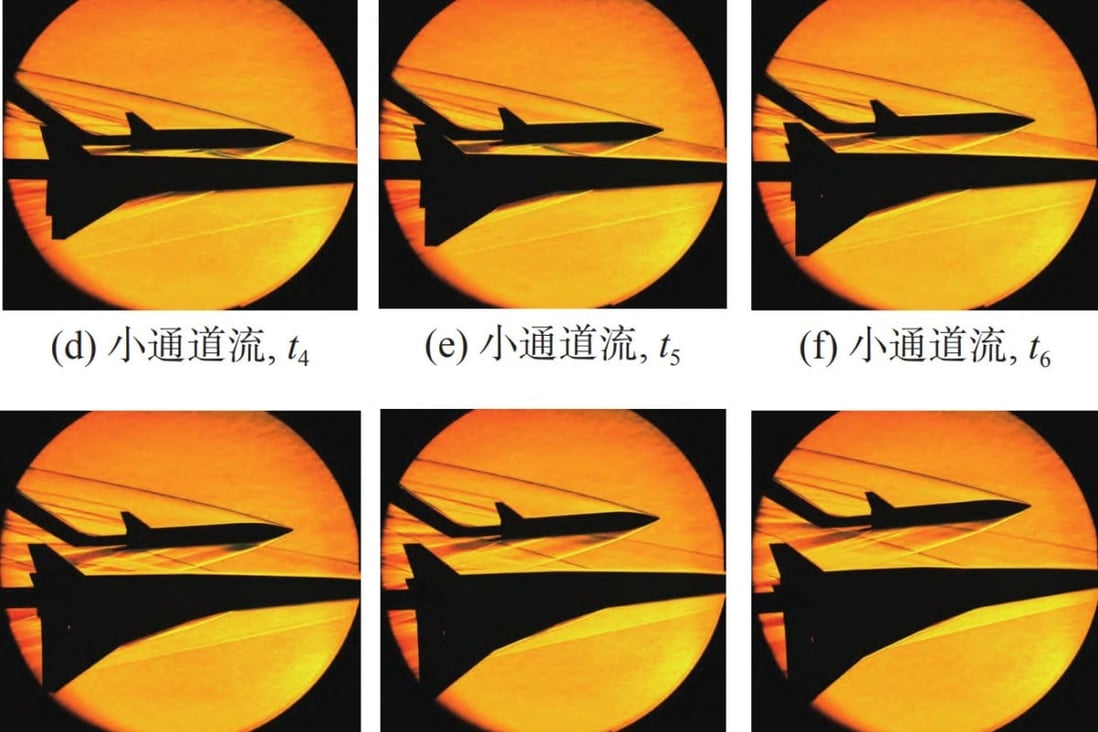China claims to have developed the world’s most advanced system for evaluating an aircraft’s ability to deliver a weapon at hypersonic speed.
Ukraine ‘Starts Decimating’ Iranian Drones; 5 Suicide UAVs Including ‘Most Advanced’ Mohajer-6 Shot Down – Kiev
China Not Repeating Nazi Germany’s Mistake; USAF General Says ‘No Nation In Their Right Mind’ Would Want To Fight Beijing
Chinese media reported that this technology apparently uses robotic arms to test an aircraft’s capacity to discharge payload in a strong wind tunnel, making it perfect for testing a prototype hypersonic bomber.
Researchers at the China Aerodynamics Research and Development Center in Sichuan province are said to have developed a new hypersonic captive trajectory system (CTS) that employs two robotic arms to hold and tilt a prototype aircraft and its cargo.
This allows the aircraft and its cargo to virtually move in all directions while being tilted, rotated, and panned.
This is the latest in a long line of Chinese endeavors in hypersonic weapons. Many analysts believe China has made significant strides toward developing hypersonic weapons and has already surpassed its longtime adversary, the US.

The captive trajectory system (CTS) was developed in the 1960s and has since been frequently employed by military researchers to evaluate aircraft/store integration projects before flight testing.
The system commonly uses a small crane to pull things away from an airplane in a wind tunnel to replicate the uncoupling of two items at high speeds.
However, the China Aerodynamics Research and Development Center team, led by Lin Jinzhou, has developed a CTS that employs two robotic arms instead of the typical one, giving it greater mobility.
“So far, the CTS tests available in other countries support one-body movement only. In the hypersonic range, there is no report of CTS being used,” Lin and her colleagues told the SCMP.
Russia’s ‘Deadly’ Incendiary Munitions Pound Liberated Ukrainian Village; Drone Captures Terrifying Footage
Challenges Faced By The Team
According to a paper published in the Chinese journal Acta Aerodynamica Sinica, this two-armed CTS allows researchers to replicate cargo offloading at Mach 6 in a 3.3-foot wind tunnel. It also enables them to analyze how the aircraft and its delivered item perform at high speeds.
However, Lin cautions that separating the aircraft from its payload at such high speeds could be risky. Shock waves, vortexes, and other airflow patterns may form when a hypersonic aircraft separates from another object, thereby increasing the chance of a collision involving the aircraft and its payload.
“Whether the storage can be safely separated from the aircraft becomes a big problem,” she said.
The team observed shock waves between the hypersonic aircraft and separating cargo during the Mach 6 experiment. The shock waves reverberated back and forth between the two bodies, slowing down the cargo and giving it an odd pitch that put the plane in danger of being hit.
As a result of several shocks that went sideways, the aircraft rolled into an uneven position. The researchers claimed they might establish a safer method of offloading under varied flying situations by altering the airplane’s relative movements and payload.
This research is also crucial to advancing China’s ambitions to build a two-stage transportation system. The system aims to deliver a weapon or passenger vessel to near-space altitudes before releasing it to travel anywhere on Earth in under an hour.
The construction of hypersonic aircraft needs extensive wind tunnel tests since test flights are expensive. These tests also assist in preventing accidents. However, the testing process requires significant work to obtain reliable data and information.
The Chinese researchers said it was challenging to fit two mechanical arms in a hypersonic tunnel. If the rigs are not correctly positioned and built, they could jam the tunnel and lower the test’s accuracy.
The report noted that the strong shockwaves created by the tunnel’s high wind speeds required the robotic arms to endure the shock’s energy and maintain an error margin of less than one millimeter.
Lin’s team revealed that these harsh settings put a lot of strain on the CTS’ precision motors, gears, and control system. Furthermore, the two robotic arms’ movements had to be correctly coordinated and synchronized based on actual flying conditions throughout the simulation.
Communication between the arms proved challenging because electrically charged particles during hypersonic flight can interfere with delicate electronic equipment.
Chinese researchers had to develop new sensors, computer algorithms, and highly rapid communication systems to overcome these obstacles. Overall, the latest research by Chinese scientists could assist the nation in developing a hypersonic bomber soon.
- Contact the author at ashishmichel@gmail.com
- Follow EurAsian Times on Google News